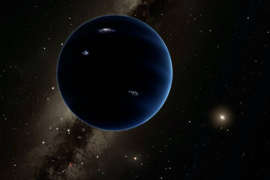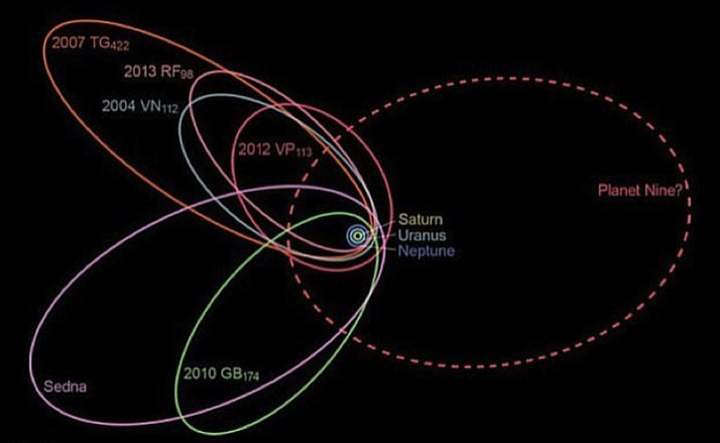
American astronomers – our compatriot Konstantin Batygin and his colleague Mike Brown from the California Institute of Technology in Pasadena (Caltech) – released new data, from which it follows: Planet 9, aka Planet X, still exists. The probability is 99.6 percent.
Let me remind you that Planet 9 “appeared” theoretically – thanks to calculations. Brown and Batygin took a closer look at 13 so-called minor planets whose orbits are located beyond Pluto's orbit in the Kuiper belt – a cluster of massive and not very objects that surrounds the solar system. The trajectories and patterns of movement of the minor planets indicated that they were being influenced by some very heavy body. Astronomers reported this in the specialized journal The Astronomical Journal in 2016. The computer simulations they then conducted showed that it was affected by an object about 10 times heavier than Earth. It moves in a highly elongated orbit, then approaching the Sun by 200 astronomical units, then moving away by 1200. An astronomical unit is the distance from the Earth to the Sun. That is, the object is very distant. To fly around our star, it needs more than 15 thousand years.

Over the past five years, no one has seen Planet 9. Many even strongly doubted the ideas of Brown and Batygin, which were initially accepted, as they say, with a bang. Like, there is no Planet 9. But the “discoverers” with numbers in their hands continue to insist: it exists.
Brown and Batygin present their slightly corrected arguments in a new study. His findings were recently published in a scientific article titled The orbit of Planet Nine, which can be found on the Cornell University preprint website. It is referenced by the Universe Today edition.
Astronomers assure that the amicable deviation of the orbits of minor planets in the Kuiper belt is not the result of some systematic error. They are indeed affected by some kind of massive object.
From the refined calculations it follows: Planet 9 may be located closer than it seemed before – about 10 times farther than Neptune. The planet itself seems to be a little lighter – from 9 to one and a half Earth masses. And most likely – 5 terrestrial masses.
Batygin and Brown believe that Planet 9 can be seen through a wide-angle reflector telescope with three huge mirrors at the Vera Rubin Observatory in Chile, which will be operational in 2022 and should be fully operational in 2023.
FOR REFERENCE
It is generally accepted that there are now 8 full-fledged planets in the solar system – Mercury, Venus, Earth, Mars, Jupiter, Saturn, Neptune and Uranus. Pluto has not been considered a planet since 2006 – it is too small. Therefore, if it turns out that a large and heavy planet, which Brown and Batygin point to, does exist, then it will become the ninth in the solar system – Planet 9.

